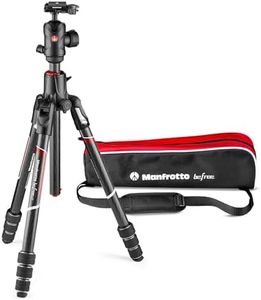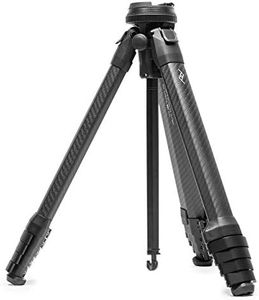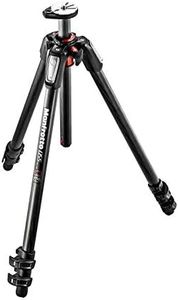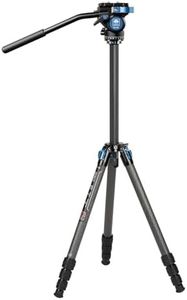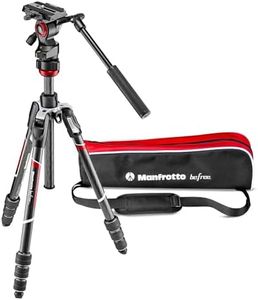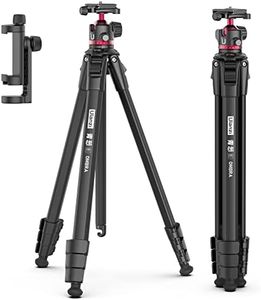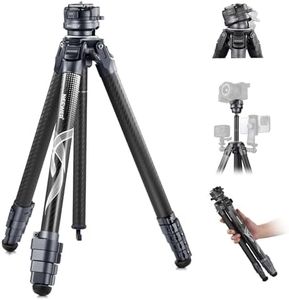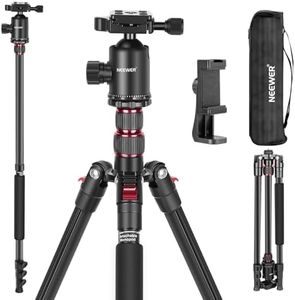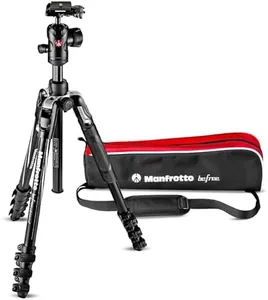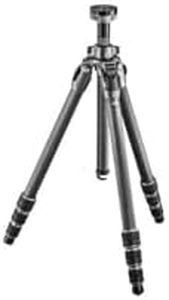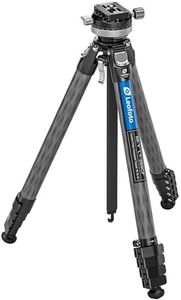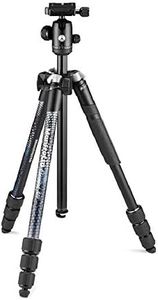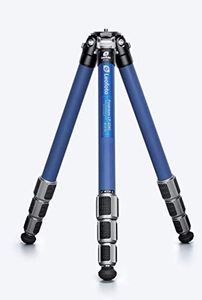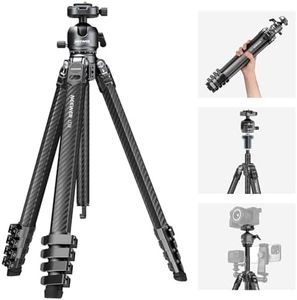We Use CookiesWe use cookies to enhance the security, performance,
functionality and for analytical and promotional activities. By continuing to browse this site you
are agreeing to our privacy policy
10 Best Ultralight Tripod
From leading brands and best sellers available on the web.Buying Guide for the Best Ultralight Tripod
Choosing an ultralight tripod is all about balancing size, weight, stability, and features to best fit your activities. Ultralight tripods are favored by hikers, travelers, and photographers who value portability and minimal gear weight. Before making your choice, consider where and how you’ll use the tripod—on long hikes, for travel, or for specific types of photography—and make sure the tripod supports your camera or device securely without being a burden to carry. Think about the conveniences and trade-offs you’re willing to accept for lighter weight, such as less maximum height or smaller load capacity.WeightWeight is simply how heavy the tripod is when you carry it. For ultralight tripods, lower weight is crucial, especially if you plan to travel long distances on foot. Tripods in this category often weigh anywhere from less than a pound up to around two pounds. The lightest models are great for backpackers or travelers keen on cutting every spare ounce but may sacrifice some features or stability. Slightly heavier ones might offer better support and stability, which can be important if you use heavier cameras or shoot in windy conditions. Think about how far and how often you need to carry the tripod—if you’re traveling light for long days, the lightest tripod makes sense, but for occasional outings or if stability matters more, a mid-weight ultralight might be better.
Folded LengthFolded length refers to how short the tripod becomes when fully collapsed. This determines how easily it fits inside or outside your backpack or luggage. The shortest tripods can shrink down to about 12 inches, while others may be over 18 inches long when folded. Shorter ones are easier to pack and less awkward to carry but could be less stable or take longer to set up. If you value super compact gear, look for the shortest folded length. However, if you don’t mind a slightly larger pack, you can prioritize other features.
Maximum HeightMaximum height is how tall the tripod stands when fully extended, including the center column. Taller tripods (about 55–60 inches and up) let you take photos at eye level, which is more comfortable for most people. Shorter tripods (under 50 inches) are lighter and more compact but might require you to bend or kneel while shooting. Your needs here depend on your comfort and shooting style—if you shoot a lot of scenery or wildlife standing up, go for a taller model; if you’re okay kneeling or placing the tripod on raised surfaces, a shorter one will save weight.
Load CapacityLoad capacity is the maximum weight the tripod can safely support. For ultralight tripods, this typically ranges from 4 pounds to over 15 pounds, depending on design and materials. It’s important because if your camera and lens are too heavy for the tripod, it may wobble or even collapse. Always check the combined weight of your heaviest camera and lens, and pick a tripod that can hold at least that amount, preferably with a little extra for safety. If you use lightweight cameras or smartphones, almost any ultralight tripod will do. For heavier DSLRs or telephoto lenses, seek models with higher load capacities.
Number of Leg SectionsThis spec tells you how many telescoping pieces each leg has. More sections usually mean the tripod can fold smaller, which is great for packing, but can also make setup slower or the tripod less stable. Common choices are three to five sections. If you want the most compact folding size, look for more sections, but if you want quicker setup and better stability, fewer sections are preferable. Choose according to your priority—space-saving or ease of use and stability.
MaterialThe two main materials for ultralight tripods are aluminum and carbon fiber. Carbon fiber is lighter and absorbs vibrations better, which is good for stability but tends to be pricier. Aluminum is often a bit heavier, but still very portable and usually more affordable. If every ounce counts, carbon fiber is the top choice. If you want durability and can stand a couple extra ounces, aluminum works well.
Leg LocksLeg locks are the mechanisms used to adjust the length of the tripod legs. The most common types are twist locks and flip locks. Twist locks are streamlined and generally a bit lighter, but can be slower to operate. Flip locks are quick and easy but might add a little weight and bulk. If you want speed and convenience, flip locks could be your preference; if you want the lowest weight and a sleeker design, twist locks might be better. The best choice depends on your setup habits and which style feels easier for you.
Head TypeThe tripod head is the part your camera attaches to, and for ultralight tripods, you’ll often find ball heads or sometimes no head at all (meaning you can add your own). Ball heads are compact and easy to use, adjusting in all directions quickly. Some tripods might have simpler or more specialized heads, or support for phones. If you want maximum speed and versatility, ball heads are recommended. If you have special needs (like panoramic shots), look for heads with those abilities. Always check that the head matches the weight and type of your camera.
